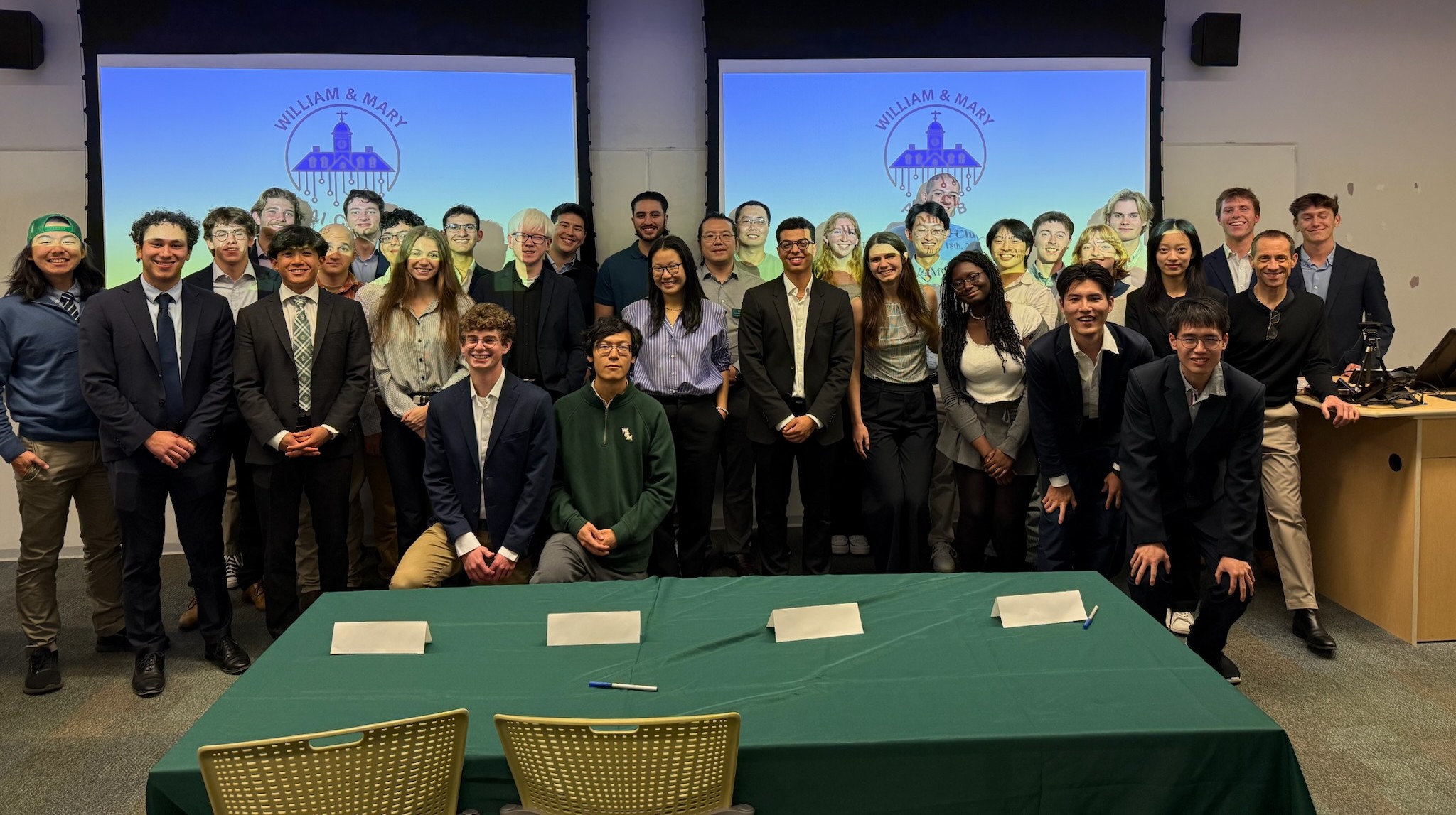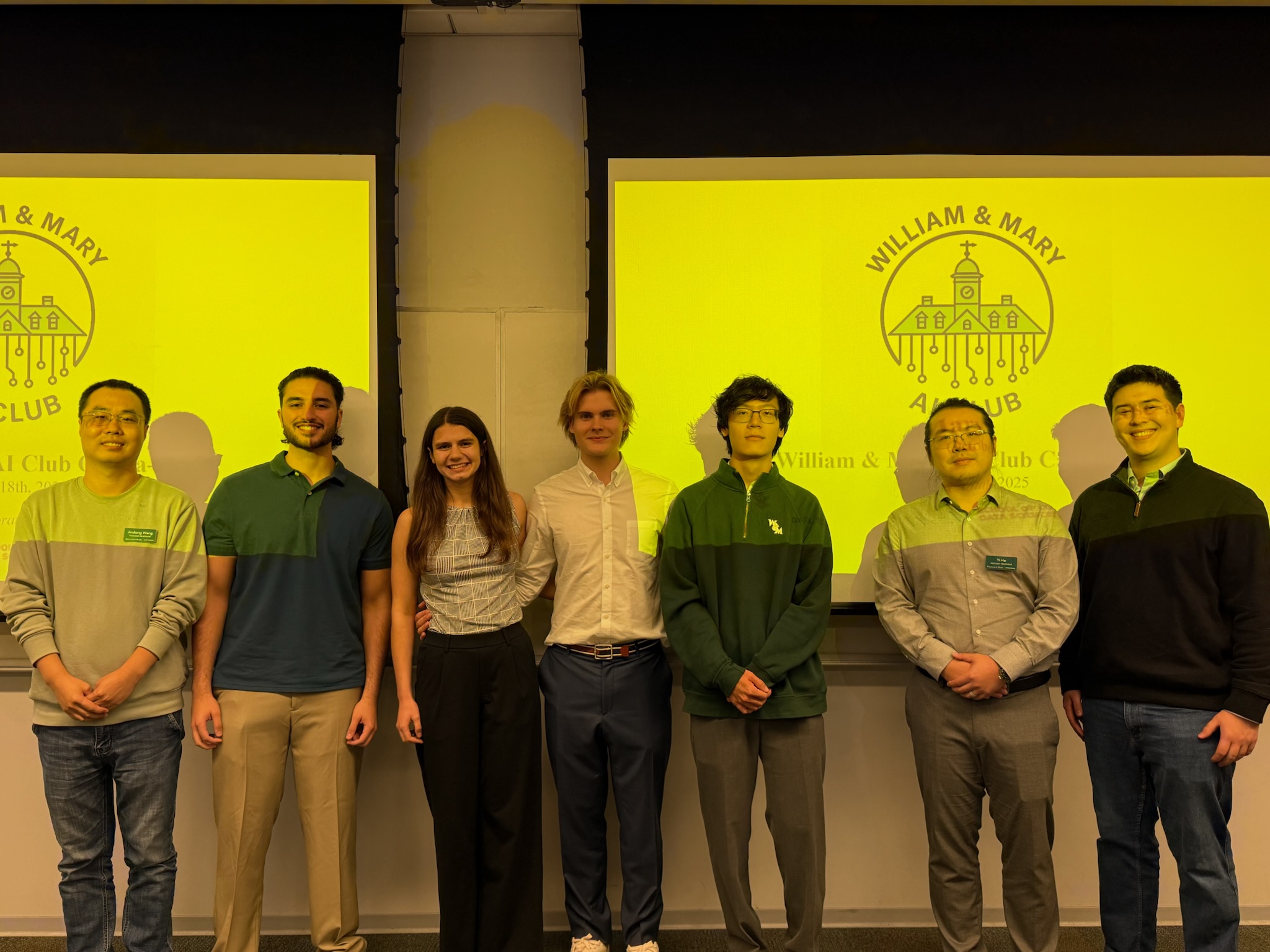William & Mary’s First Case-a-thon Challenges Students to Solve Real-World Problems with AI

While Homecoming at William & Mary is synonymous with parades, reunions, and football, 11 student teams spent the week trying to teach computers to see underwater, using artificial intelligence to turn data into discovery.
Hosted by the AI Club, William & Mary's inaugural Case-a-thon brought together students from several disciplines to merge technology with human problem-solving.
Unlike hackathons, which typically last 24 to 48 hours, a Case-a-thon gives participants more time to develop a comprehensive project.
“The objective was to push students to create real products with real impacts,” said Andrew Yowell, the AI Club’s Vice President and one of the event organizers. “In one week, students were prompted to develop web apps around our selected prompt and publicly host them. They then had to deliver a 15-minute presentation consisting of their rationale for the tools and live demonstrations.”
In keeping with William & Mary’s “Year of the Environment”, one of the prompts provided to competitors was to create AI tools that can automatically recognize and identify plants and animals from underwater survey images.
Yowell acknowledged the prompt was probably different than what most students would have expected.
“We wanted to create tangible tools that people don't typically associate AI with,” explained Yowell. “We wanted to show the impacts AI could have on the sciences, where it's typically portrayed as a productivity or business tool.”
Professor Yi He from the William & Mary Data Science department provided the underwater images for competitors to use and secured $3,000 in prize money from the Commonwealth Cyber Initiative, contributing to a total of $13,000 in prizes for the Case-a-thon.
The winning team consisted of sophomores Celia Schaefers and Michael Wang and freshman Pierce Reisig.
 Schaefers said they wanted to distinguish their product from other competitors by looking at more than just creating a tool to identify underwater plants and animals.
Schaefers said they wanted to distinguish their product from other competitors by looking at more than just creating a tool to identify underwater plants and animals.
“We looked at going further and connecting that data from multiple research groups and thinking about how researchers would actually use it.”
To answer that question, they went to the end users.
“To separate us from other teams we wanted to make sure that the product we were developing had some real value, so we reached out to people at VIMS,” said Reisig. “We built our product around the feedback we were hearing, like what would be helpful, what they wouldn't want and what they would want.”
Wang believed getting input from the users is what set them apart from other teams.
“It seemed like the other finalists had really good models, they had really good websites, but I'm not sure if they did any of these kinds of interviews because they didn't have the kind of usability that we had.”
Though the team had a week to create their project, they also had mid-terms and other Homecoming events to compete with, so they were unable to add all the features they originally envisioned.
“We had a ton of great ideas that we wanted to implement, we just didn't have the time to do it, so we had to compress the timeline even smaller,” said Reisig.
The interdisciplinary aspect of the Case-a-thon was a big selling point for the team.
“I think it's really cool they are kind of making us learn more about what we're making AI models for,” said Wang. “A lot of people don't know how to create their own tools using AI, and people that do AI don't really know enough about the fields to create tools that are good for those fields.”
For Reisig, who as a freshman has only been on campus for a few months, liked how the Case-a-thon provided a practical application of what he’s been learning in class.
“I've learned the skills, but the Case-a-thon was a great way to apply them and really try to build something and have an end goal.”
Yowell said they learned a lot from the first competition and plan to use those insights to host another AI and development event in the spring, with a focus on broader participation and deeper campus collaboration.
“We were pleased with how the event went and were super impressed with the quality and depth of the projects students were able to create,” said Yowell. “Faculty and alumni judges alike reflected similar thoughts and pushed for the event to be held again.”
Yowell said they intend to post the videos of all the final presentations on the AI Club’s website so they are available for all to see what William & Mary students are able to create.
This article was created with the help of OpenAI's ChatGPT-5. All content was reviewed and edited by the communications team.
